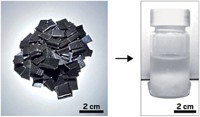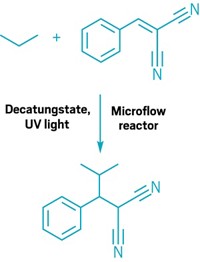Advertisement
Grab your lab coat. Let's get started
Welcome!
Welcome!
Create an account below to get 6 C&EN articles per month, receive newsletters and more - all free.
It seems this is your first time logging in online. Please enter the following information to continue.
As an ACS member you automatically get access to this site. All we need is few more details to create your reading experience.
Not you? Sign in with a different account.
Not you? Sign in with a different account.
ERROR 1
ERROR 1
ERROR 2
ERROR 2
ERROR 2
ERROR 2
ERROR 2
Password and Confirm password must match.
If you have an ACS member number, please enter it here so we can link this account to your membership. (optional)
ERROR 2
ACS values your privacy. By submitting your information, you are gaining access to C&EN and subscribing to our weekly newsletter. We use the information you provide to make your reading experience better, and we will never sell your data to third party members.
Environment
Energy Squeezed Out Of Polymers
Mechanochemical action induces polymers to generate radicals that in turn produce hydrogen peroxide to drive subsequent reactions
by Lauren K. Wolf
March 12, 2012
| A version of this story appeared in
Volume 90, Issue 11
Generating chemical energy to run reactions in the lab could be as easy as squeezing a spongy stress ball, according to researchers at Northwestern University. H. Tarik Baytekin, Bilge Baytekin, and Bartosz A. Grzybowski have shown that, by compressing polymers in contact with water, they can generate hydrogen peroxide to drive various reactions at a mechanical-to-chemical energy conversion efficiency of up to 30% (Angew. Chem. Int. Ed., DOI: 10.1002/anie.201108110). By comparison, typical power plants generate energy with 30 to 40% efficiency. When polymers are compressed, some of their bonds cleave homolytically, generating radicals. If water is present at the polymer surface, H2O2 is produced when the radicals diffuse to the interface. The researchers demonstrated this mechanochemical phenomenon by injecting an aqueous solution of a nonfluorescent boronic ester of 7-hydroxycoumarin into the sole of a sneaker. After being walked on for two hours, the polymeric sole fluoresced brightly, indicating the generation of H2O2 and the compound’s subsequent cleavage of the boronic ester and release of the fluorescent 7-hydroxycoumarin. “When you look at all the polymers out there—in car tires, soles, and plastic bags—just aging unproductively, it is such a wide-open opportunity for energy retrieval,” Grzybowski says.




Join the conversation
Contact the reporter
Submit a Letter to the Editor for publication
Engage with us on Twitter